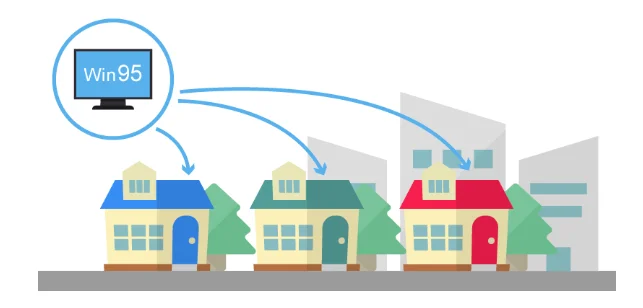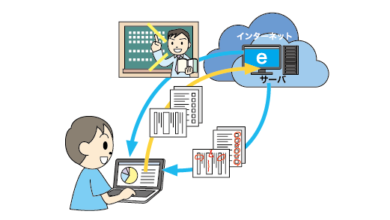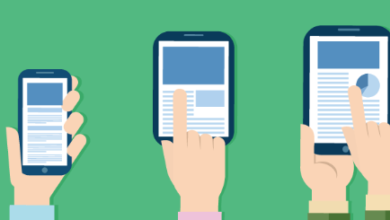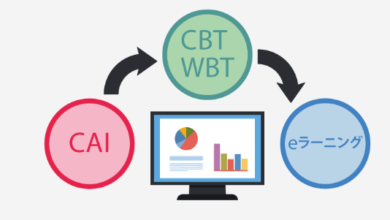The spread of personal computers and the multimedia nature of learning

Its history dates back to the 1990s.
At the time, personal computers were considered special devices used by a very small number of advanced users, such as those who needed them for work or research, or those who were knowledgeable about computers.
In 1995, something happened that would completely change our lives:
Windows 95 was released.
Windows 95 was easy to use and did not require any special skills or expertise, and it became an explosive hit around the world, with personal computers spreading to ordinary households.
Windows 95 computers came standard with a CD-ROM drive. CD-ROMs can store multimedia data such as images and audio, which led to the spread of multimedia in a variety of fields. The field of education was no exception, and “multimedia teaching materials” were created that made extensive use of photographs and videos, and the infrastructure for learning using computers and CD-ROMs was now in place.
At the time, this was called CBT, but it has since become one element of the full-fledged “e-learning” that continues to this day.
Broadband Internet
The term “e-learning” first came into use in Japan around 2000.
With the government launching the “e-Japan Initiative,” attention was focused on converting old media such as paper to e-learning.
A major turning point at this time was
the availability of broadband Internet.
Affordable, large-capacity Internet connection services such as ADSL, CATV, and FTTH appeared, laying the foundation for high-speed, large-capacity communications that were incomparable to traditional dial-up connections.
The content playback platform shifted from CD-ROMs to web browsers, which are Internet connections.
While learning that mainly uses CD-ROM materials is called “CBT (Computer Based Training),” learning that uses the Internet and other web-based tools is called “WBT (Web Based Training).”
In most CBTs, learning progress information was managed individually on the learner’s own device, but
with WBT, not only learning history but also teaching materials and programs can be managed all together on the server.
With CD-ROM, teaching materials and programs are recorded on the CD-ROM, making it difficult to revise the materials or modify the programs, but with WBT, teaching materials and programs are stored on the Web, so providers can manage courses, update teaching materials, and maintain programs quickly and at low cost, and
students can study in the latest environment and with the latest materials, anytime, anywhere.
Learning over the internet has also made two-way communication possible.
Instead of the traditional one-way learning, students can now communicate via email or chat, and live classes can be streamed, allowing for two-way communication. E-learning has revolutionized classroom education.
In the early 2000s, as intranets became more widespread, some companies began to introduce e-learning training, and it gradually became a part of our daily lives.



